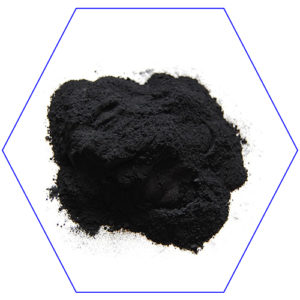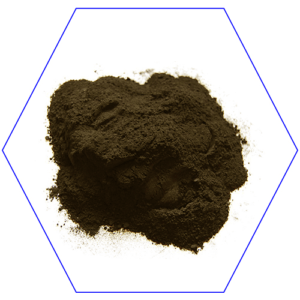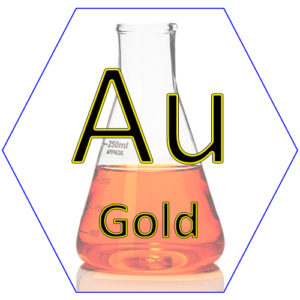Description
Prices
Fullerene C60 99.5% + from $ 24 quote by request
Fullerene C60 99.5NS% + from $ 26 quote by request
Fullerene C60 99.99NS% + from $ 150 quote by request
The solubility of our fullerene products:
| Solvent | C60 mg / ml | C70 mg / ml |
| 1-chloronaphthalene | 51 | ND |
| 1-methylnaphthalene | 33 | ND |
| 1,2-dichlorobenzene | 24 | 36.2 |
| 1,2,4-trimethylbenzene | 18 | ND |
| tetrahydronaphthalene | 16 | ND |
| o-xylene | 9 | 14.3 |
| carbondisulfide | 8 | 9.8 |
| 1,2,3-tribromopropane | 8 | ND |
| chlorobenzene | 7 | ND |
| p-xylene | 5 | 3.9 |
| toluene | 3 | 1.4 |
The known physical properties of buckminsterfullerene:
- Density: 1.65 g cm-3
- Standard moulding heat: 9.08 kcal mole-1
- Refractive index: 2.2 (600 nm)
- Boiling Point: 800K
- Specific Resistance: 1014 Ohm · m-1
Buckminsterfullerenes or buckyballs usually have a spherical shape and consist of 60 carbon atoms with a frame structure. C60 consists of 12 pentagonal and 20 hexagonal rings. As you already know, you can buy carbon 60 with excellent quality from our company. The spherical shape of the C60 fullerene can remind you of the shape of a soccer ball. By the way, did you know that fullerene is the most symmetrical structure in the world? We can find three types of rotation axes.
Fullerene C60 is an ideal candidate for biomedical engineering due to its desirable properties. As you can see above, fullerenes have really interesting solubility in various solutions, most of the compounds are aromatic. The fastest developing area in the field of biomedical engineering using C60 is undoubtedly the study of cancer, which is undeniable very important in modern medicine. And what makes the C60 fullerene so promising in such studies? Fullerene C60 can be filled with cancer cells using various functional groups. After absorption, fullerene can convert oxygen inside the cancer cell (in the presence of light radiation) into reactive oxygen radicals that cause apoptosis (the cell literally commits suicide because reactive oxygen will destroy all important biomolecules in the cell and the cell simply cannot survive). This process is called photochemotherapy and can be a good alternative to radiation therapy. Other biochemical applications include the development of various agents used, for example, in MRI (magnetic resonance imaging), X-ray imaging, drug and gene delivery (mainly hydrophobic drugs), and so on. So you see, fullerenes show really good biocompatibility.
C60 fullerenes can also be used as electrocatalysts, for example, in fuel cells, when the fuel is oxidized at the anode and oxygen is restored at the cathode. With the highest levels of pollution from fossil fuels in our world, it is usually a great effort to find an alternative to fossil fuels. Fuel cells can be such an alternative because they convert chemical energy into electrical energy. They can directly use alcohol, such as methanol and ethanol.
Fullerenes can be used to store gas due to their unique structure. Other carbon structures are hydrogenated and dehydrogenated irreversibly. But fullerenes overcome this barrier. When fullerene C60 is hydrogenated, it changes color according to the amount of added hydrogen.
Another application of fullerenes can be found in the field of composite coating research. If we want to improve the properties of the commonly used coating agent, the best way to do this is to add nanofillers.
Fullerenes are also known as excellent antioxidants. With high speed, they can react with many radicals and act as a kind of shield from dangerous radicals. They even got the nickname " the free radicals sponge". They are able to neutralize about 30 radicals per one fullerene molecule. It's so amazing!
This may be a huge surprise, but fullerenes can also be used in cosmetology. Creams containing several derivatives of fullerenes exist. For example, polyethylene glycol-modified fullerene C60 is commonly used. Due to the antioxidant potential of fullerenes, fullerene can also be used as a derivative of vitamin C (ascorbic acid) or vitamin E (tocopherol) to prevent lipid peroxidation due to the effects of radicals
We all know that diamonds are made of carbon, so it should not be a big surprise that we could use fullerenes as precursors for creating diamonds.
Last but not least, fullerenes can be used to harden metals. Fullerenes can take advantage of their small size and excellent reactivity to interact with a number of metals and create a more durable and hardened material than the metal itself. This is of great use in aerospace technology.
Title
CAS#: 99685-96-8










